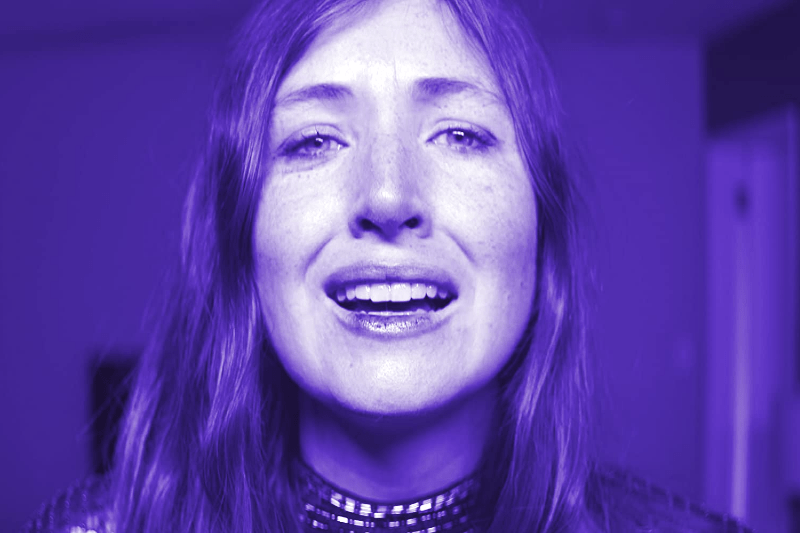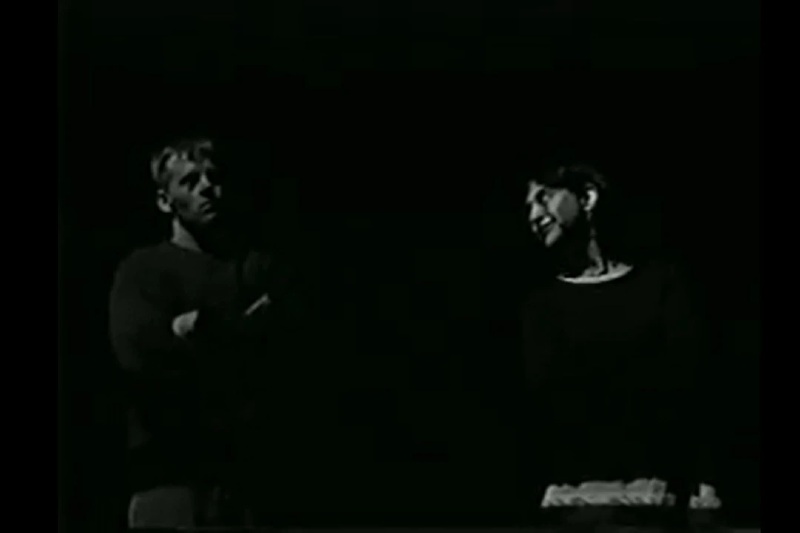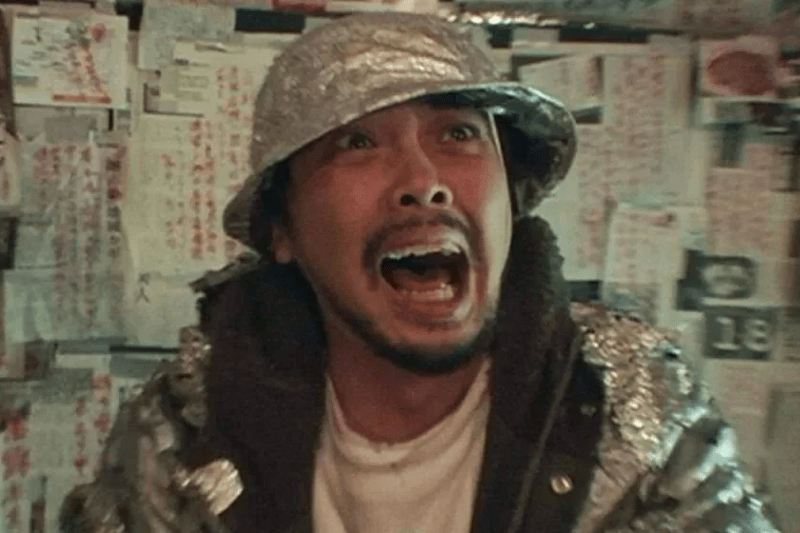What spreads faster: word of mouth or an infectious disease? Before Amy Seimetz made headlines as the ex-director of the controversial Max drama The Idol, she asked this question in her underseen marvel, She Dies Tomorrow. Released digitally in the summer of 2020 during the COVID pandemic, She Dies Tomorrow was a pandemic movie made before the pandemic. A claustrophobic psychological thriller, the film is a perhaps too-precise examination of female anxiety and ennui.
The “she” of She Dies Tomorrow is Amy (Kate Lyn Sheil), who informs her friend Jane (Jane Adams) that she knows she is going to die tomorrow. Initially worried for Amy, Jane soon takes on Amy’s paranoia, spreading it to several others. At first, the infected express similar skepticism and frustration before eventually becoming convinced that they will also all die tomorrow. Each prepares for their death differently: a blasé Amy looks up how she might prove useful after death as a leather jacket; Jane’s hysterical brother and sister-in-law mourn with their now-infected child; both halves of a couple confess neither of them wanted to continue dating. Unable to keep the news of their incoming demise to themselves, the infected continue to pass on their disease, seemingly unattuned to the fact that they doom whoever hears it.
She Dies Tomorrow shares a few key similarities to the contagion horror movie genre defined by The Ring and It Follows. In these movies, the infection process is entirely human, but the threat itself is supernatural. She Dies Tomorrow never outlines the nature of the illness — is it a folie à deux (shared delusion)? Or some type of mass hysteria, a modern dancing plague? At the end of the film, we don’t even know if these characters are going to die. For all we know, it could’ve been a bizarre social panic, a woozy y2k-esque comedown that seems mildly embarrassing upon examination.
Grief, mental illness, and trauma have always been portrayed in horror films, but over the last ten years, they’ve increasingly become central villains. The major modern influence on this trend is probably the cult hit The Babadook, but it was canonized as a hallmark of “elevated horror” by Hereditary. Just in the last year, we’ve seen grief literalized as a monster in movies like Nanny, The Boogeyman, and Talk to Me. These movies both reflect and perpetuate our contemporary obsession with talking about mental health.
The monster of She Dies Tomorrow remains obscure. Though the movie addresses self-absorption in how callously the characters initially react to their infection, it’s not a Sick Of Myself-esque indictment of middle-class narcissism. We see very little of Amy and Jane pre-infection, so it’s unclear how much of their antisocial behavior is attributable to the sickness. In those aforementioned grief-is-the-monster movies, secrecy and repression are how the monster gets its strength. It’s by talking about your problems, bringing the monster into the light — often literally — that it can be defeated. In this iteration, there’s no way to face whatever the monster is head-on. She Dies Tomorrow poses a scarier and more complicated notion: a world where talking about your pain didn’t help and, in fact, only made it worse.
What if you experienced an emotion and didn’t immediately share it? What would it be like to sit with your anxiety for longer than it takes to name five things you can see and four things you can feel? In a culture where “breaking down the stigma of mental health” is a multimillion-dollar enterprise, this is a radical proposition. The mental health disruption industry is increasingly massive, with spokespeople who range from niche podcasters to major stars like Kristen Bell. Easily consumable pop-therapy litters TikTok and Instagram, where psychologists make digestible bits of content for strangers and users pathologize any human behavior.
“Talk to a therapist” has become the “thoughts and prayers” for a certain class of online young people, a go-to panacea applicable to any and all crises. She Dies Tomorrow taps into the common fear amongst those who suffer from anxiety that society is, in fact, better off without them. The movie makes any act of community and socialization dangerous. It doesn’t ask if we can come together to defeat a monster. It asks how you can accept the fate you’ve been dealt and who you’ll take down with you.
She Dies Tomorrow smartly doesn’t look at social media. For one thing, the movie would end far too quickly if the virus made it to TikTok. One of the only times technology is used is in the phone calls between Amy and Jane, which are so distorted and patchy they are basically useless. But, primarily, the movie understands that the drive to talk about ourselves and make others’ anxieties about us is potent enough offline. It’s unclear whether sharing is a symptom of the disease. Perhaps you physically cannot stop yourself from telling others you will die tomorrow in the same way you can’t simply stop having a fever. As much as we like to assign blame to modern technology for social ills, perhaps there are some things, like oversharing, that are just innately human.
Through Amy, we see that anxiety is isolating, uncontrollable, and destructive, but mostly shatteringly boring. She puts on a sparkly party dress, relapses into excessive drinking, and plays the same record on repeat, but it’s not glamorous self-destruction. It’s just a desperate, miserable ennui that quickly permeates the entire cast. Horror is no stranger to female protagonists, but Amy is still an outlier. Her anxiety — played with disarming ease by Sheil — isn’t rendered in the screaming monologues or hazy drug sequences ubiquitous in the canon of films about female suffering. She’s neither a hashtaggable, unlikeable female protagonist nor is she an audience surrogate scream queen. Amy, who shares both Seimetz’s first name and lives in Seimetz’s real-life house, offers a discomfitingly realistic, if alien, portrayal of anxiety.
It’s telling that we don’t see anyone try to make the most of their last day on earth. When confronted by death, the characters are content to observe what their life was rather than to try to change it. “A movie’s an hour and a half,” Amy responds when Jane suggests she distract herself, the implication being that eventually, that hour and a half will end, and Amy will be in the exact same spot with the exact same problems. “I’m okay. I’m ready. I’m not okay,” Amy repeats at the close of the film, confronting the audience with her dread for the final time. Ninety minutes later, she’s still in the cycle of anxiety — and now we’re there with her.







